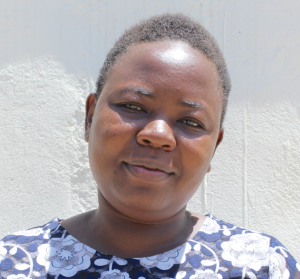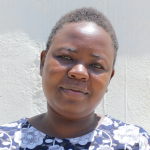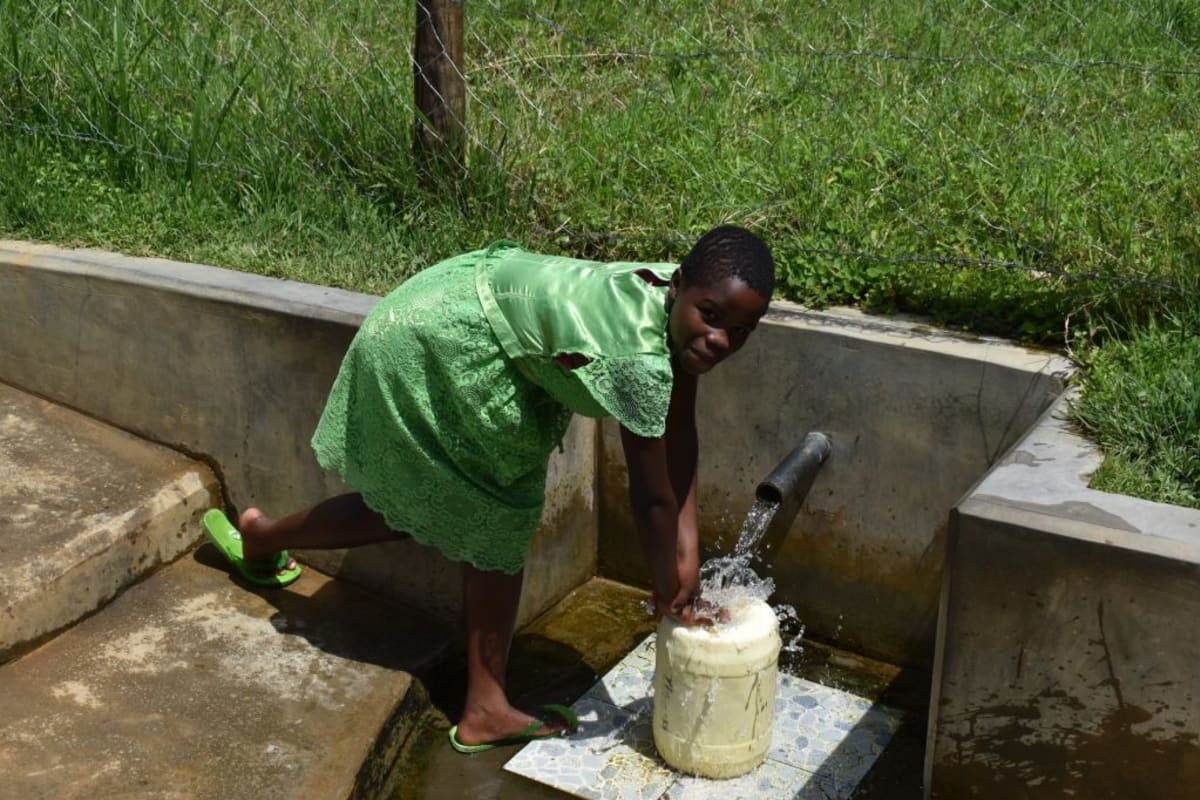August, 2022: Lukala Community Spring Protection Complete!
Lukala Community now has access to clean water! We transformed Tova Spring into a flowing source of naturally filtered water thanks to your donation. Our team also trained the community on improved sanitation and hygiene practices. Together, these components will unlock the opportunity for community members to live better, healthier lives.
"From what I have seen, [I] am a hundred percent sure that all routes of contamination are blocked and my life is no longer in danger because I have clean and safer water throughout," said 50-year-old farmer Arnoda Salano. "Since [I] am the one close to the water point, I will be at peace. In the past, there was a lot of dispute at [the] crowded water point, and everyone wanted to draw water first."

Arnoda at the spring.
Children were just as excited as adults about the new waterpoint.
"It has become so easy for me to get water. Before it was protected, a lot of time was wasted queueing since there was some leakage that reduced the discharge speed," said 17-year-old Sheila K. "Since there will be no queuing at [the] spring, I will be able to assist my parents [to] do other chores at home."

Sheila collecting water.
Preparing for Spring Protection
Community members worked together to source and carry all locally available construction materials to the spring. These included bricks, sand, stones, and fencing poles. Some people also chiseled away at large rocks to break them down into gravel. Because people have to carry most items by hand, the material-collection process can take anywhere from a few weeks to months.

When the community was ready, we sent a lorry to deliver the remaining construction materials, including cement, plastic tarps, and hardware. Then, our construction artisan and field officers deployed to the spring to begin work. Individual households provided meals throughout each day to sustain the work team.
From Open Source to Protected Spring: A Step-by-Step Process
First, we cleared and excavated the spring area. Next, we dug a drainage channel below the spring and several runoff diversion channels above and around the spring. These help to divert surface contaminants away.
To ensure community members could still access water throughout the construction process, we also dug temporary channels from the spring's eye around the construction site. This allowed water to flow without disrupting community members' tasks or the construction work. Excavation created space for setting the spring's foundation, made of thick plastic tarp, wire mesh, concrete, and waterproof cement.

After establishing the base, we started brickwork to build the headwall, wing walls, and stairs. Once the walls had grown tall enough, we began one of the most crucial steps: setting the discharge pipe. The discharge pipe needs to be positioned low enough in the headwall so the water level never rises above the spring's eye, yet high enough to allow room for the average jerrycan (a 20-liter container) to sit beneath the pipe without making contact.

If we place the discharge pipe too high above the spring's eye, backpressure could force water to emerge elsewhere. Too low, and community members would not be able to access the water easily. We embedded the pipe using clay (or mortar when clay is in short supply) and placed it at an incline to ensure water flows in the right direction.
In coordination with brickwork, we pitched stones on both sides of the spring's drainage channel. We then cemented and plastered each stone, forming the rub walls. These walls discourage people and animals from standing in that area, which could cause soil erosion and a clogged drainage area.
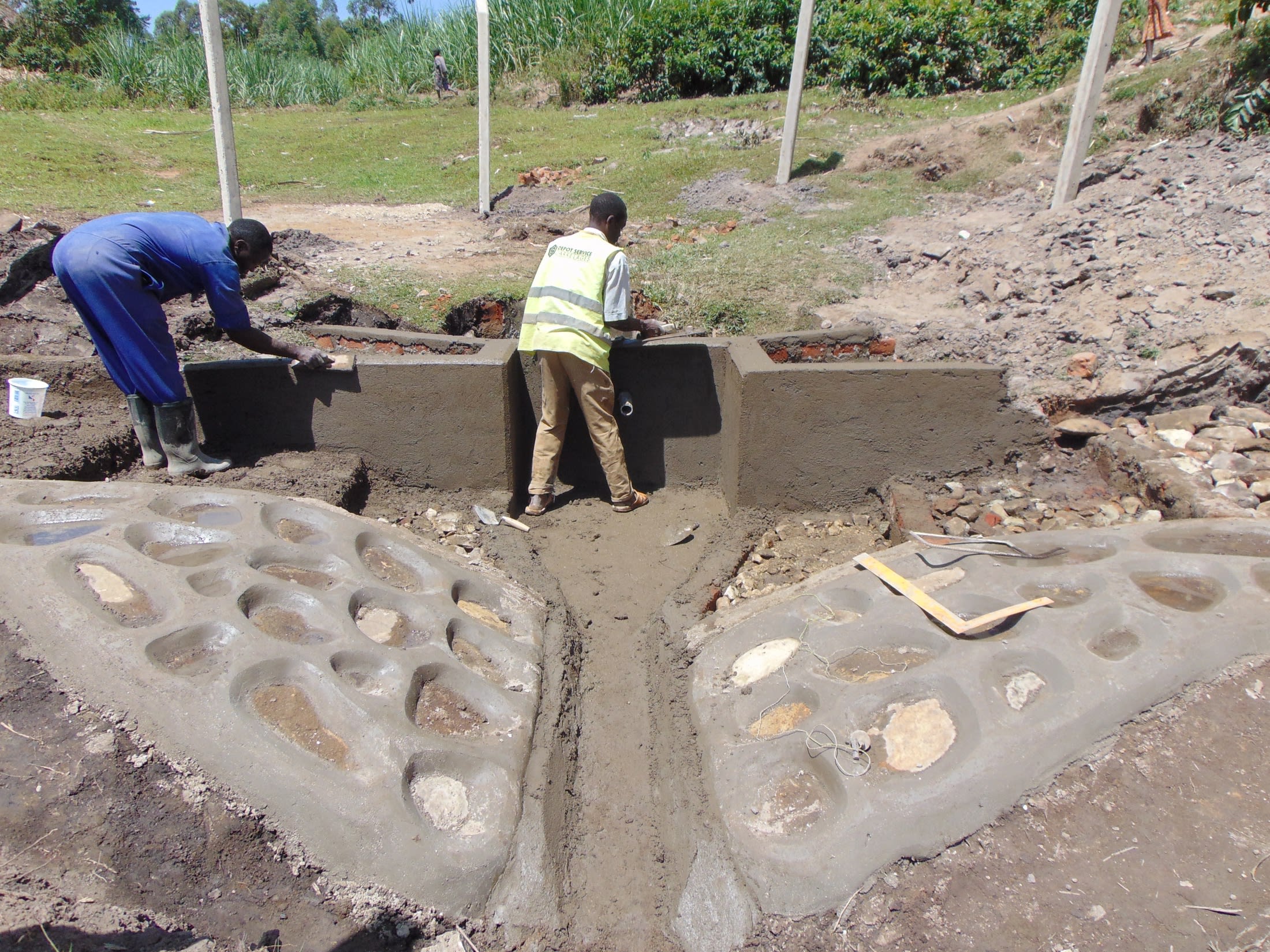
We then cemented and plastered both sides of the headwall and wing walls. These finishing layers reinforce the brickwork and prevent water in the reservoir from seeping through the walls. In turn, enough pressure builds in the reservoir box to push water out through the discharge pipe.
As the headwall and wing walls cured, we cemented and plastered the stairs and installed four tiles beneath the discharge pipe. The tiles protect the concrete from the falling water's erosive force while beautifying the spring and facilitating easy cleaning of the spring floor.

The final stage of construction is backfilling the reservoir box behind the discharge pipe. We cleared the collection box of any debris that may have fallen during construction. Then we redirected the temporary diversion channels back into the reservoir box, channeling water into this area for the first time. We closed off all of the other exits to start forcing water through the discharge pipe only.
We filled up the reservoir area with the large, clean stones community members had gathered, arranging them in layers like a well-fitting puzzle. We covered the rocks with a thick plastic tarp to minimize potential contamination sources, then piled enough dirt on top to compensate for future settling.
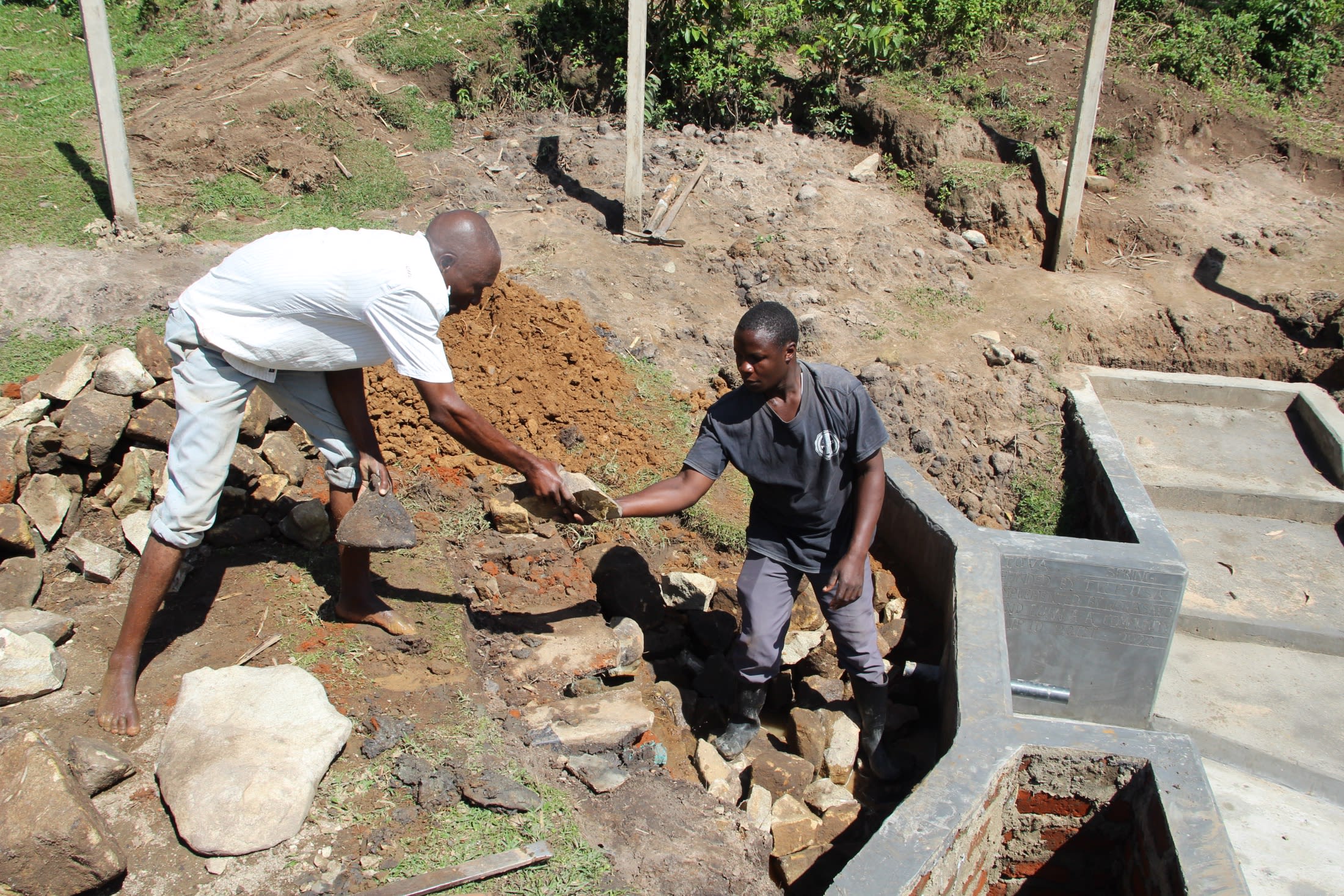
Backfilling with stones.
Community members transplanted grass onto the backfilled soil to help prevent erosion. Finally, the collection area was fenced to discourage any person or animal from walking on it. Compaction can lead to disturbances in the backfill layers and potentially compromise water quality.

Community members transplant grass.
The entire construction process took about two weeks of work and patience to allow the cement and plaster to finish curing. As soon as the spring was ready, people got the okay from their local field officers to fetch water.

Our field officers handed the water point over to the water users and some local officials while a large number of community members sang praise songs. Everyone promised to put into practice everything they had learned.

Happiness, thanksgiving, and appreciation were the order of the day, flowing in all directions.
Training on Health, Hygiene, and More
Together with the community, we found their preferred date for training while considering other community calendar events, such as the agricultural season and social events. We requested a representative group of community members to attend training and relay the information learned to the rest of their family and friends.
When the day arrived, facilitators Betty Muhongo and Jemmimah Khasoha deployed to the site to lead the event. 34 people attended the training, including 20 women and 14 men. We held the training at the home of Julius Opiri, the water user secretary.

Participants receive training materials.
We covered several topics, including community participation in the project, leadership and governance, personal and environmental hygiene, water handling and treatment, spring maintenance, dental hygiene, the ten steps of handwashing, disease prevention, and how to make and use handwashing stations.

Training session on soapmaking.
During the leadership and governance session, we held an election for the newly formed water user committee leaders, who will oversee the maintenance of the spring. We also brainstormed income-generating activities. Community members can now start a group savings account for any future minor repairs to the spring and a cooperative lending group, enabling them to develop small businesses.

Maintenance and management of the spring session.
The maintenance and management of the spring was an interesting topic for participants. They learned what should and should not be done at the water point. They all agreed that no one will wash clothes, bathe, or bring their animals near the water point. As a group, they determined that anyone who breaks the rules will have to pay a fine. They also came up with a duty roster for each household to be in charge of cleaning the water point one week at a time.

Participants hold a discussion.
Another more sensitive topic of discussion was domestic violence. Most families struggle with disagreements at times, but when trainers discovered that a young mother was recently killed by her husband due to domestic violence in the community, they thought it prudent to cover the topic.
At the end of the session, everyone agreed that the decision is up to the individual being abused because he or she is the only one that knows what is truly happening. But the group also concluded that people should not have to worry about violence from their partners and that relationships where people love and care for one another are important.
"I have learned a lot during the training. The issue of domestic violence has made me live in fear," shared 56-year-old farmer and treasurer of the water committee Sophia Maikuba.
"My husband is a drunkard, so there is no way you can discuss anything with him. He is always right. I have also learned that there is no need to [engage] with him because these are end times, just as the Bible says in Ephesians 5:16. We should live like wise people. When the situation is not favorable, it's better to look for an alternative for safety."
Conclusion
This project required a substantial collaboration between our staff, our in-country teams, and the community members themselves. When an issue arises concerning the spring, the water user committee is equipped with the necessary skills to rectify the problem and ensure the water point works appropriately. However, if the issue is beyond their capabilities, they can contact their local field officers to assist them.
Also, we will continue to offer them unmatchable support as a part of our monitoring and maintenance program. We walk with each community, problem-solving together when they face challenges with functionality, seasonality, or water quality. Together, all these components help us strive for enduring access to reliable, clean, and safe water for this community.
With your contribution, one more piece has been added to a large puzzle of water projects. In our target areas, we’re working toward complete coverage of reliable, maintained water sources within a 30-minute round trip for each community, household, school, and health center. With this in mind, search through our upcoming projects to see which community you can help next!
Thank you for making all of this possible!

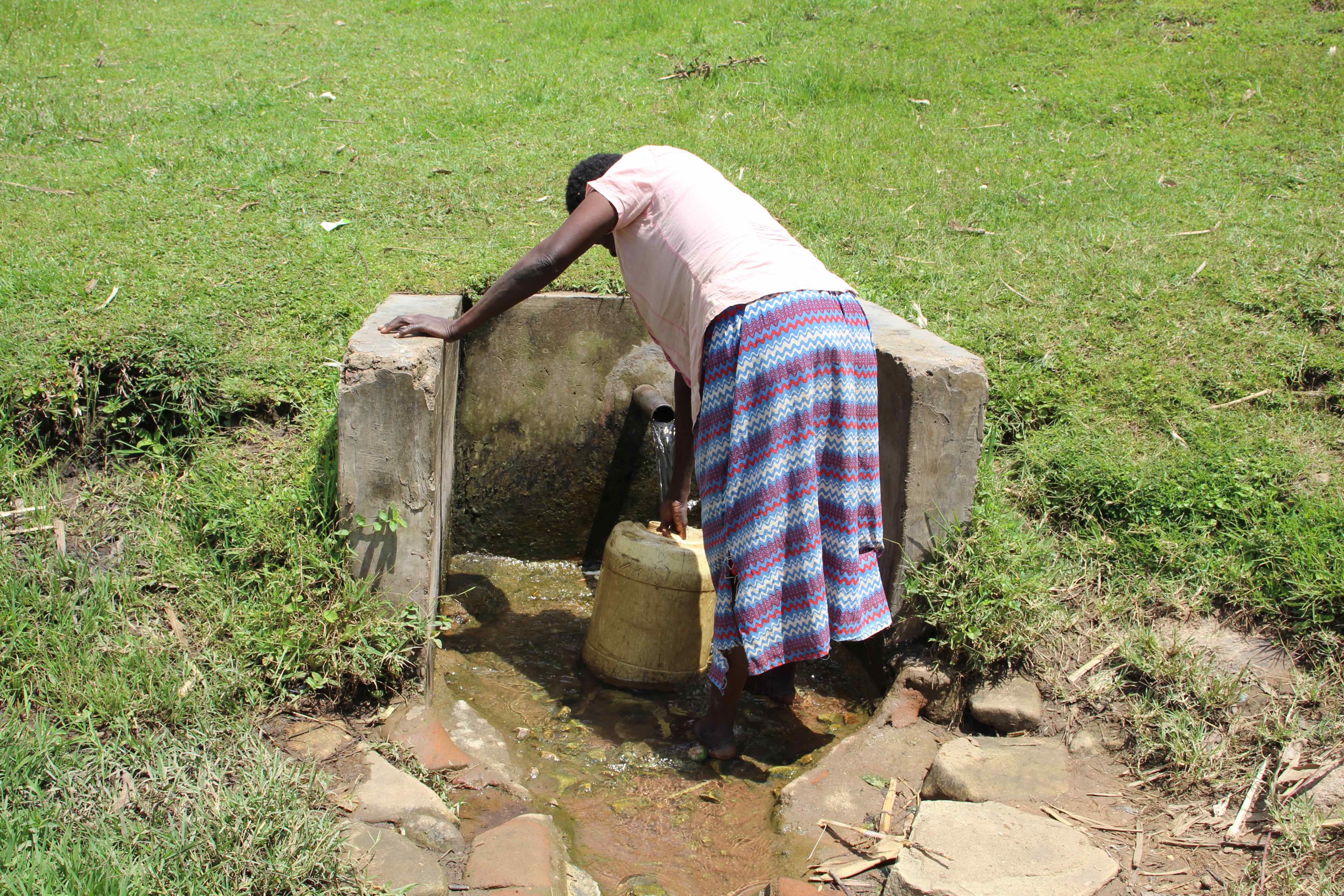
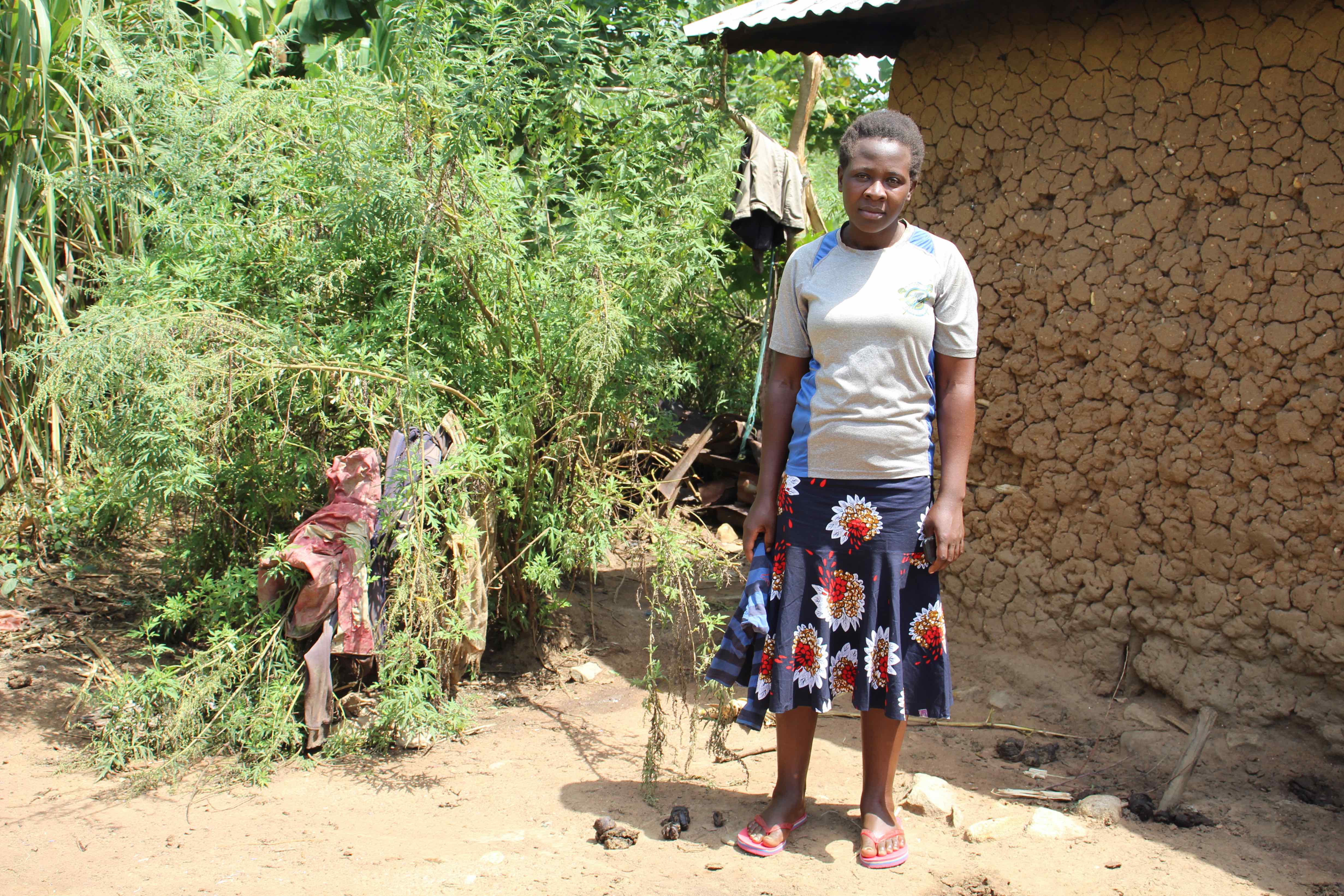
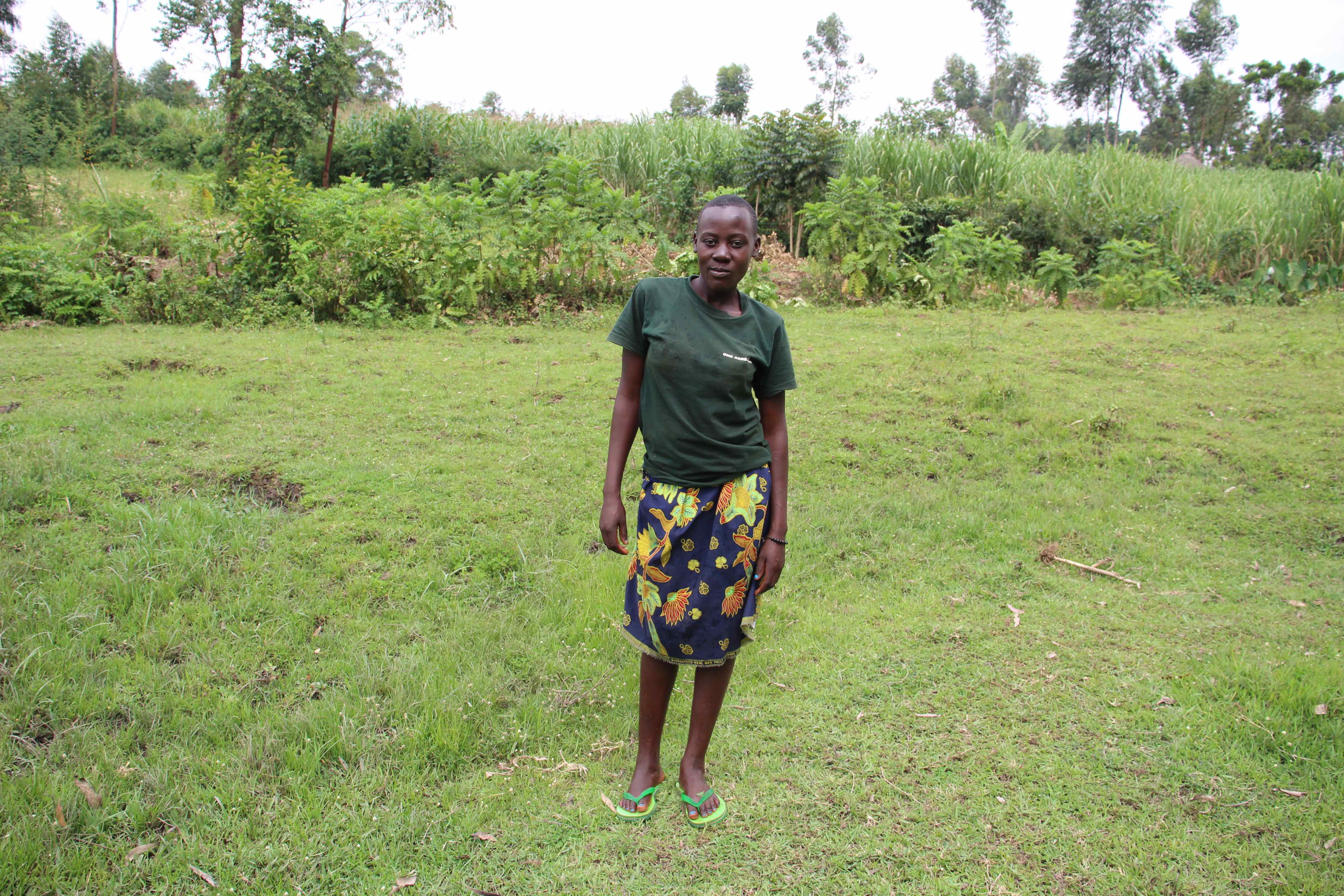

 Protected Spring
Protected Spring
 Rehabilitation Project
Rehabilitation Project










